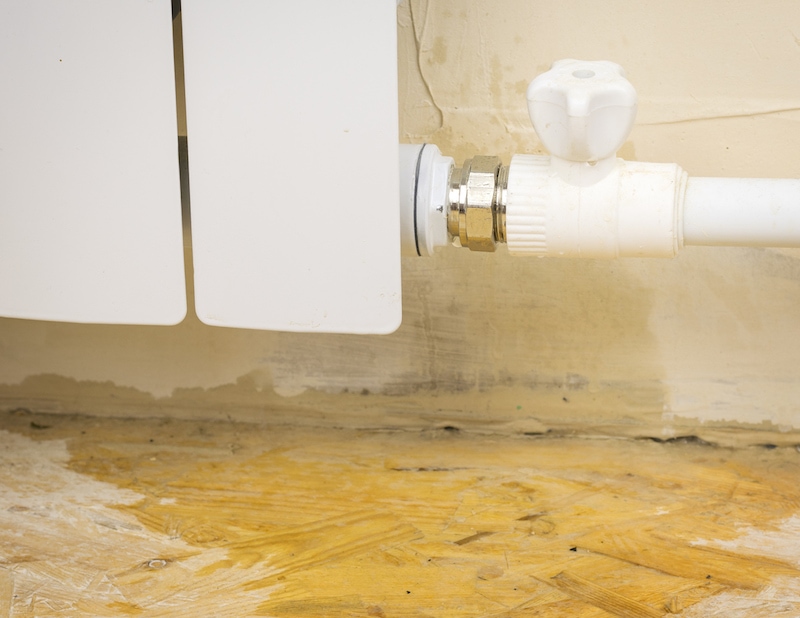Everyone has got his or her own theory about Common Water Leaks In House.

Leakages not only trigger waste of water yet can also create unnecessary damage to your home and also advertise undesirable natural development. Water leakages could go undetected considering that most of the pipework in our home is hidden. By understanding as well as looking for everyday situations that cause leakages, you can secure your house from future leaks as well as unnecessary damage. Today, we will consider 6 leakage triggers that might be creating your pipes to drip.
Intruding roots
The majority of water leakages begin outside the house rather than inside it. You might observe damp patches or sinkholes in your lawn, and that might indicate that tree roots are getting into water lines creating water to leak out.
Rusty water supply
This may be the reason of staining or warping on your water pipelines. If our plumbing system is old, take into consideration replacing the pipes given that they are at a higher risk of deterioration than the more recent versions.
Faulty Pipe Joints
Pipe joints can deteriorate over time, resulting in water leaks. If you have noisy pipes that make ticking or banging sounds, particularly when the warm water is turned on, your pipeline joints are probably under a whole lot of pressure.
Immediate temperature modifications.
Extreme temperature changes in our pipes can cause them to increase and also acquire all of a sudden. This growth as well as contraction might trigger splits in the pipelines, specifically if the temperature level are listed below freezing.
Poor Water Connectors
Sometimes, a leak can be triggered by loose pipes as well as pipes that provide your home appliances. Typically, shifting is what creates the loose water Links. You may find when it comes to a cleaning maker, a hose pipe may spring a leakage due to drinking throughout the spin cycle. In case of a water connections leakage, you may see water running straight from the supply line or puddles around your appliances.
Obstructed Drains
Blocked drains pipes could be aggravating as well as inconveniencing, yet they can in some cases end up triggering an overflow leading to rupture pipelines. Keep eliminating any materials that might go down your drains pipes that can clog them to prevent such aggravations.
All the above are root causes of leaks but not all water leakages arise from plumbing leakages; some leakages could come from roofing system leakages. All leakages should be repaired promptly to stay clear of water damages.
Leaks not only create waste of water yet can also trigger unneeded damages to your house and also promote unwanted organic growth. By recognizing and also looking for daily situations that trigger leakages, you can shield your residence from future leakages and also unneeded damages. Today, we will certainly look at six leak triggers that may be triggering your pipelines to trickle.
At times, a leakage can be created by loosened hoses as well as pipelines that provide your devices. In instance of a water links leakage, you might notice water running directly from the supply line or puddles around your devices.
TYPES OF WATER LEAKS YOU SHOULD BE FAMILIAR WITH
Shower Fixture Water Leaks
If you notice a water leak near your shower fixture, perform an inspection to confirm if you are able to find broken caulk lines. As your shower fixture becomes older, it is not uncommon for water to leak onto the other side of the frame. To fix this type of plumbing leak, scrape off the old caulk and run a new bead of it around the shower fixture to seal up any fractured crevices and holes.
Bathtub Drainage Water leaks
To fix this type of leak in a bathtub, remove the drain flange and clean it. Next, you should also remove the rubber gasket located beneath the tub’s drain hole. Buy a replacement gasket that matches the old version and install it in the same location. Once the drain flange and rubber gasket are installed, apply a small amount of silicone caulk to the drain to prevent water leakage below your tub.
Water Pipe Leaks Behind Walls
Issues such as discolored grout and loose shower tiles may be caused by a water pipe leak behind the walls in your bathroom. To fix this plumbing leak, you will be required to remove the tiles, grout, or caulk in your shower. Once the tiles in your shower have been removed, perform an inspection of the drywall to confirm if it’s moist or wet. If you notice water marks or mold on the wall, this is an indicator of a water pipe leak.
Toilet Leaks
Nobody likes a toilet leak. It can cause water damage to the subfloor, joists, or even the ceiling in the room below. To combat this type of water leak, you will need to reinstall your toilet with a brand new ring of wax. If the toilet sits uneven, be sure to add toilet shims to correct the issue. Do you notice a broken bolt slot or flange? We recommend performing a new metal flange installation to remediate this issue.
Sink Water Leaks
To prevent damage to the beautiful counter tops in your kitchen or bathroom, tighten the base of your sink to prevent a water leak. Next, scrape away any old caulk around the sink and apply a fresh coat. Prior to using the kitchen or bathroom sink, you will need to secure the fixture to the countertop with the clips located beneath the sink rim to prevent a water leak.
https://www.fenwickhomeservices.com/blog/6-types-of-water-leaks-you-should-be-familiar-with/

I discovered that entry about How to detect water leaks in your home when doing research the web. So long as you enjoyed our page if you please remember to share it. Many thanks for your time. Kindly pay a visit to our site back soon.
We've got answers!